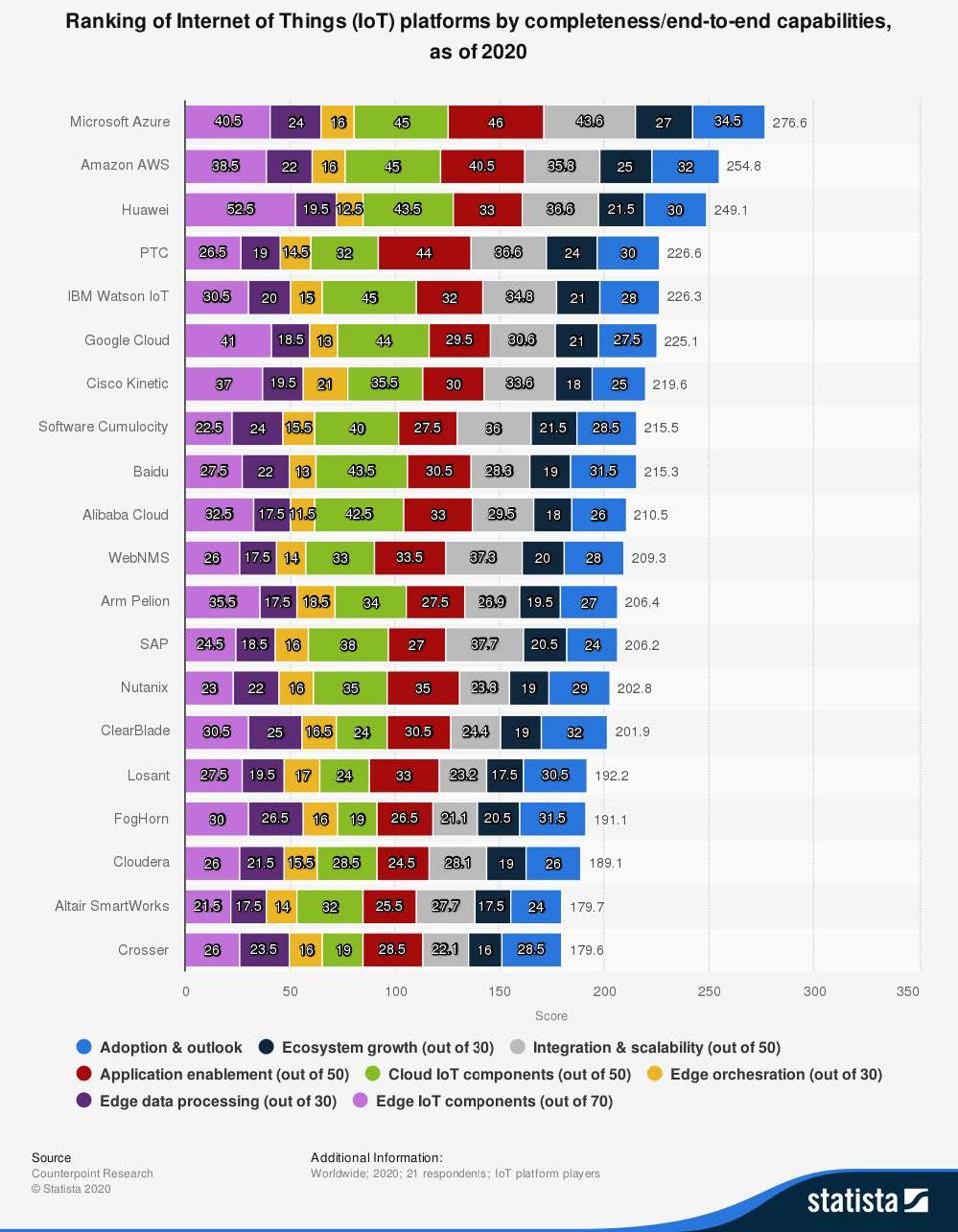Gartner Predicts Public Cloud Services Market Will Reach $397.4B by 2022

- Worldwide end-user spending on public cloud services is forecast to grow 23.1% in 2021 to total $332.3 billion, up from $270 billion in 2020.
- Garter predicts worldwide end-user spending on public cloud services will jump from $242.6B in 2019 to $692.1B in 2025, attaining a 16.1% Compound Annual Growth Rate (CAGR).
- Spending on SaaS cloud services is predicted to reach $122.6B this year, growing to $145.3B next year, attaining 19.3% growth between 2021 and 2022.
These and many other insights are from Gartner Forecasts Worldwide Public Cloud End-User Spending to Grow 23% in 2021. The pandemic created the immediate need for virtual workforces and cloud resources to support them at scale, accelerating public cloud adoption in 2020 with momentum continuing this year. Containerization, virtualization, and edge computing have quickly become more mainstream and are driving additional cloud spending. Gartner notes that CIOs face continued pressures to scale infrastructure that supports moving complex workloads to the cloud and the demands of a hybrid workforce.
Key insights from Gartner’s latest forecast of public cloud end-user spending include the following:
- 36% of all public cloud services revenue is from SaaS applications and services this year, projected to reach $122.6B with CRM being the dominant application category. Customer Experience and Relationship Management (CRM) is the largest SaaS segment, growing from $44.7B in 2019 to $99.7B in 2025, attaining a 12.14% CAGR. SaaS-based Enterprise Resource Planning (ERP) systems are the second most popular type of SaaS application, generating $15.7B in revenue in 2019. Gartner predicts SaaS-based ERP sales will reach $35.8B in 2025, attaining a CAGR of 12.42%.

- Desktop as a Service (DaaS) is predicted to grow 67% in 2021, followed by Infrastructure-as-a-Service (IaaS) with a 38.5% jump in revenue. Platform-as-a-Service (PaaS) is the third-fastest growing area of public cloud services, projected to see a 28.3% jump in revenue this year. SaaS, the largest segment of public cloud spending at 36.9% this year, is forecast to grow 19.3% this year. The following graphic compares the growth rates of public cloud services between 2020 and 2021.

- In 2021, SaaS end-user spending will grow by $19.8B, creating a $122.6B market this year. IaaS end-user spending will increase by $22.7B, the largest revenue gain by a cloud service in 2021. PaaS will follow, with end-user spending increasing $13.1B this year. CIOs and the IT teams they lead are investing in public cloud infrastructure to better scale operations and support virtual teams. CIOs from financial services and manufacturing firms I’ve recently spoken with are accelerating cloud spending for three reasons. First, create a more virtual organization that can scale; second, extend the legacy systems’ data value by integrating their databases with new SaaS apps; and third, an urgent need to improve cloud cybersecurity.

Conclusion
CIOs and the organizations they serve are prioritizing cloud infrastructure investment to better support virtual workforces, supply chains, partners, and service partners. The CIOs I’ve spoken with also focus on getting the most value out of legacy systems by integrating them with cloud infrastructure and apps. As a result, cloud infrastructure investment starting with IaaS is projected to see end-user spending increase from $82B this year to $223B in 2025, growing 38.5% this year alone. End-user spending on Database Management Systems is projected to lead all categories of PaaS through 2025, increasing from $31.2B this year to $84.8B in 2025. The following graphic compares cloud services forecasts and growth rates:





































































